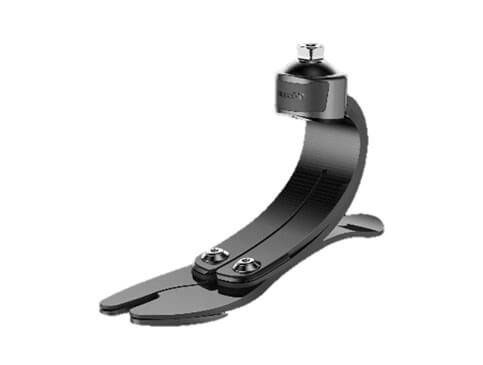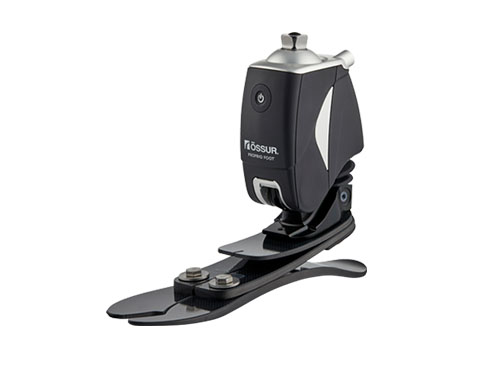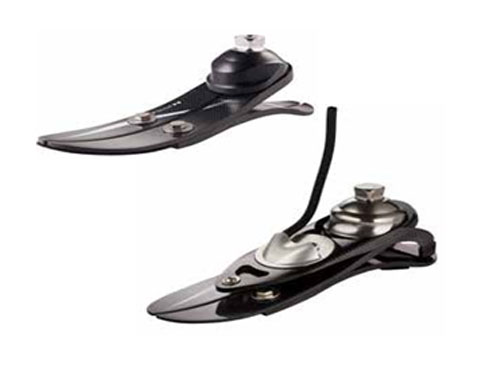Complete Prosthetic Feet
Complete Prosthetic Feet
Prosthetic foot design and construction has progressed tremendously in the past few decades and now commonly incorporates carbon fiber structures to reduce weight and improve energy return. Some feet have terrain adapting and shock absorbing features, while others are more suitable for special purposes such as swimming. Most high-end feet can be ‘tuned’ to suit each individual by adjusting or exchanging internal elastomer bumpers or wedges, and are custom ordered from the manufacturer to specifications for each client. Prosthetic feet are selected by considering each individual’s activity level and the type of terrain that they will be traversing. We encourage our clients to become familiar with the different types of prosthetic feet available, to assist in the selection of the most appropriate type for them.
Prosthetic feet, like knees, hips, and other components incorporated into a prosthesis, can be grouped according to a recognized functional level classification system:
- Low Impact Level: Daily activities involving limited and steady walking with the use of a walking AID.
- Moderate Impact Level: Daily activities involving normal walking, with the ability to demonstrate varied cadence.
- High Impact Level: Daily activities involving fast walking, jogging and climbing stairs. Example: Light manual labor, recreational sports.
- Extreme Impact Level: Daily activities involving rigorous walking, running and heavy lifting. Example: Heavy manual labor including lifting, track and field sports.
Single Axis
A hinged ankle joint is incorporated into the prosthetic foot. Rubber bumpers within the ankle structure absorb ankle motion induced by body weight.


Multi Axis (Moderate Impact Level)
Rubber bumpers in the ankle mechanism permit a rocking motion of the foot from heel to toe as well as from side to side. This can be useful for walking on uneven terrain. Generally these feet do not have much stored energy return and they have a softer feeling underfoot than the SACH feet.
Stored Energy (Moderate to High Impact Level)
These feet have an internal structure that acts like a spring. This spring will store energy and return this energy to the amputee, propelling them forward, as the toes of the prosthetic foot leave the ground. Some of the designs are virtually maintenance-free, while others incorporating internal bushings and bumpers require regular servicing to maintain optimal performance. Most of these feet have terrain-adapting features that absorb irregularities in the ground and improve performance on inclined surfaces. Some of the photos show the prosthetic feet without their accompanying cosmetic covers.


Advanced Features Stored Energy (Moderate to High to Extreme Impact Level)
These feet incorporate multiple features such as energy storage and return, shock absorption and rotation, and terrain adaptation. Suitable for prolonged walking, running and jumping they can be used both in daily ambulation and in sports.


























